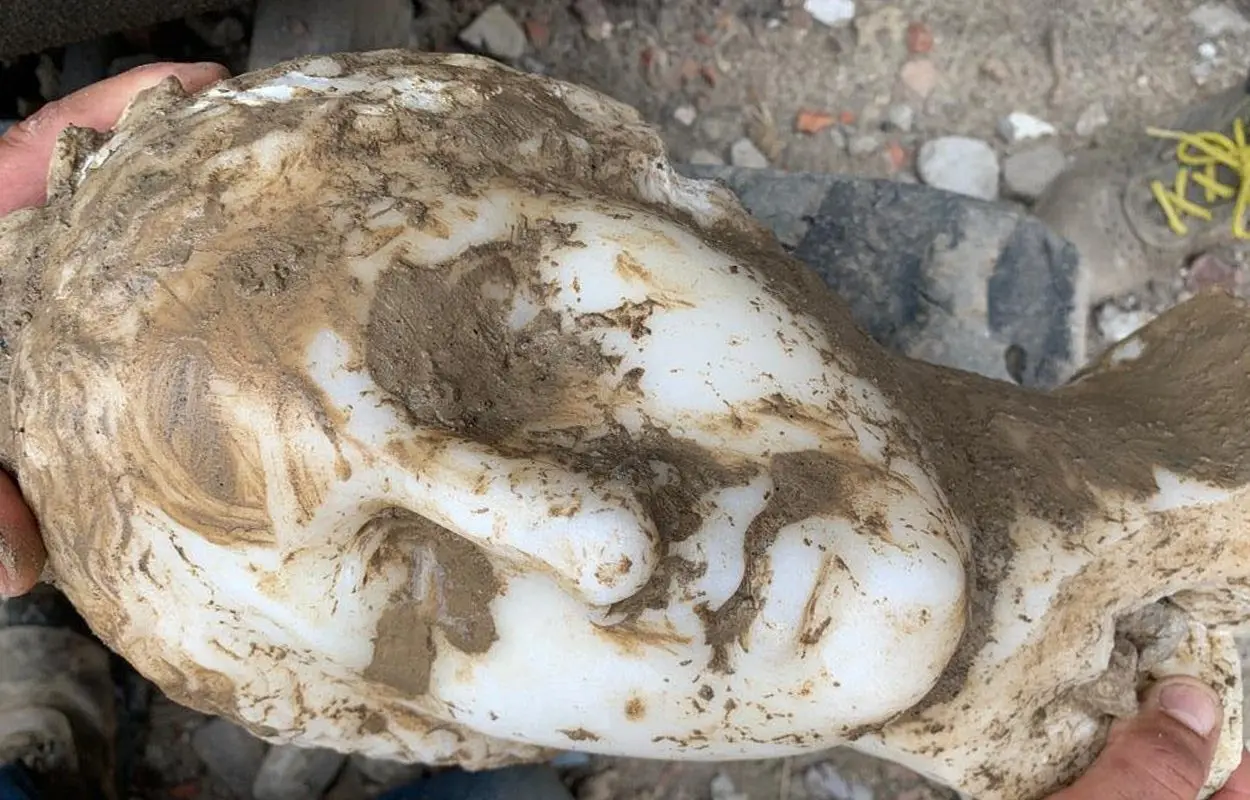Archaeologists have uncovered the head from a marble statue during excavations in Rome’s Piazza Augusto Imperatore near the corner of Via di Ripetta along the Tiber.
The discovery was made during remodelling works of the square which was created in 1937 by the Fascist regime to enhance the Mausoleum of Augustus.
The mausoleum is a large tomb built by the Roman Emperor Augustus in 28 BC following his victory at the Battle of Actium. The structure is circular in plan and measures 90 metres in diameter by 42 metres in height, originally capped by a conical roof with a huge bronze statue of Augustus.
The restoration of the mausoleum was part of Mussolini’s grand restructuring of Rome to connect the aspirations of Italian Fascism with the former glories of the Roman Empire. Mussolini saw himself as intimately linked to the accomplishments of Augustus, perceiving his own persona as a “reborn Augustus,” poised to initiate a fresh era of Italian supremacy.
In January 2017, Italian authorities announced a grant from Telecom Italia (now the TIM Group) for a restoration project of the Mausoleum of Augustus, allowing it to open to the public for the first time since the 1970s.
Archaeologists excavating in the Piazza Augusto Imperatore have found a marble head depicting a woman from the Roman period. The head has female features clearly defined with details such as waves of hair, lips, nose and eyes still preserved.
Roberto Gualtieri, the incumbent Mayor of Rome, said: “Rome continues to return precious testimonies of its past: a splendid marble head, intact, has just been found during the ongoing works in Piazza Augusto Imperatore curated by Sovrintendenza Capitolina ai Beni Culturali. Archaeologists and restorers are now busy cleaning and studying the find.”
Header Image Credit : Rome City Hall





